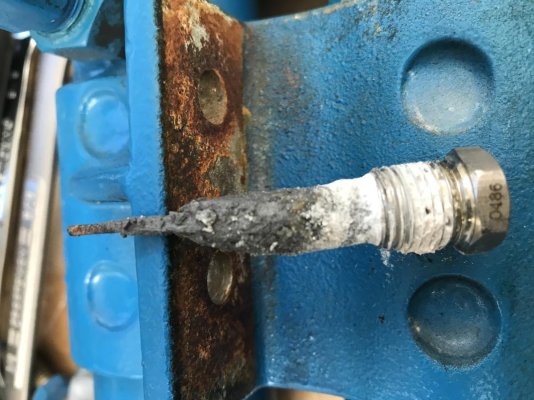RickyD
Guru
- Joined
- May 4, 2018
- Messages
- 732
- Location
- United States
- Vessel Name
- Aquarius
- Vessel Make
- Californian 55 CPMY
I have been buying my engine zinks from BoatZincs.com. The zinc portion screws into the plug. In changing the 8 zincs my two engines use, one or two will unscrew when I try to take them out and and leave the pencil zinc portion behind. Is there a fix for this? Should I take the coolers apart when this happens to remove the zinc?

